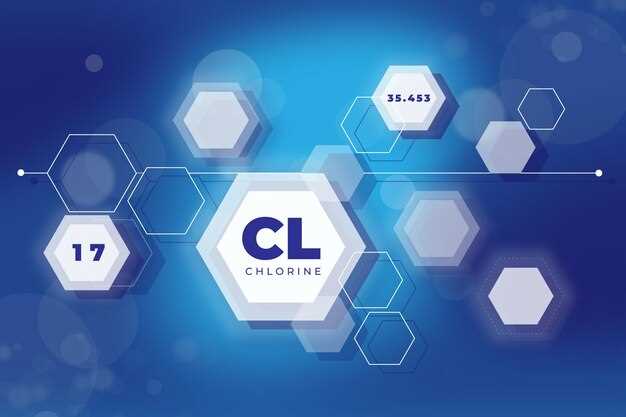
Looking for the right diuretic?
When it comes to treating conditions like high blood pressure and edema, chlorthalidone and hydrochlorothiazide are two commonly prescribed diuretics. While both medications are effective in reducing fluid retention in the body, there are some key differences to consider.
Chlorthalidone is a thiazide-like diuretic that works by increasing the excretion of sodium and water in the kidneys. Its long-lasting effects make it a popular choice for managing hypertension.
Hydrochlorothiazide, on the other hand, is a thiazide diuretic that also promotes sodium and water excretion. However, it has a shorter duration of action compared to chlorthalidone.
So which one is right for you? The answer depends on various factors, including your specific condition, medical history, and any other medications you may be taking. It’s important to consult with your healthcare provider to determine the best option for you.
Why choose our products?
At XYZ Pharmaceuticals, we offer a wide range of high-quality medications, including both chlorthalidone and hydrochlorothiazide, to help you manage your health effectively. With our commitment to excellence and customer satisfaction, you can trust that you’re getting the best possible care. Contact us today to learn more!
Definition and Purpose
Chlorthalidone and hydrochlorothiazide are both medications classified as diuretics. Diuretics are drugs that increase the production of urine, leading to increased removal of water and sodium from the body. These drugs are commonly used to treat conditions such as high blood pressure, edema (excess fluid retention), and heart failure.
The main purpose of using chlorthalidone and hydrochlorothiazide is to help lower blood pressure. Elevated blood pressure can lead to serious health problems, such as heart attacks, strokes, and kidney damage. By increasing urine production, these medications help reduce the volume of fluid in the body, which in turn decreases the amount of pressure exerted on the blood vessels.
Chlorthalidone and hydrochlorothiazide are often prescribed as part of a comprehensive treatment plan that includes lifestyle changes, such as a healthy diet and regular exercise. These medications are most commonly taken orally in tablet form and are available by prescription only.
It is important to note that while chlorthalidone and hydrochlorothiazide may have similar uses and mechanisms of action, they are different drugs and may have varying effectiveness and side effect profiles. Therefore, it is always advisable to consult a healthcare professional before starting or changing any medication regimen.
Definition and purpose

In this section, we will explore the definition and purpose of chlorthalidone and hydrochlorothiazide, two commonly used diuretic medications.
Chlorthalidone and hydrochlorothiazide are both thiazide diuretics, which means they help promote the excretion of sodium and water from the body. These medications are primarily prescribed to treat conditions such as high blood pressure, edema (fluid retention), and certain kidney disorders.
The purpose of using chlorthalidone or hydrochlorothiazide is to reduce the volume of fluid in the body, which in turn helps lower blood pressure. By increasing the elimination of salt and water through the urine, these medications can effectively reduce fluid retention and decrease the workload on the heart.
Thiazide diuretics like chlorthalidone and hydrochlorothiazide are often recommended as a first-line treatment for hypertension due to their proven efficacy and safety. They are affordable, well-tolerated, and have been in use for many years.
Chlorthalidone and hydrochlorothiazide may also be prescribed for conditions such as congestive heart failure, liver cirrhosis, and certain kidney stones. However, it is important to note that these medications should only be used under the guidance of a healthcare professional and as prescribed.
| Chlorthalidone | Hydrochlorothiazide |
|---|---|
| Brand name: Thalitone | Brand names: Microzide, HydroDIURIL |
| Strength: 12.5 mg, 25 mg, and 50 mg tablets | Strength: 12.5 mg and 25 mg tablets |
| Duration of action: approximately 24-48 hours | Duration of action: approximately 6-12 hours |
Mechanism of action

Chlorthalidone and hydrochlorothiazide belong to a class of medications known as thiazide diuretics, which work by increasing the excretion of sodium and water from the body. These medications act on the kidneys to inhibit the reabsorption of sodium, which leads to increased urine production and subsequent fluid removal.
More specifically, chlorthalidone and hydrochlorothiazide inhibit the sodium-chloride symporter in the distal convoluted tubules of the kidneys. This symporter is responsible for reabsorbing sodium and chloride ions from the urine back into the bloodstream. By blocking this reabsorption, the thiazide diuretics cause increased urinary excretion of sodium, chloride, and water.
In addition to their diuretic effect, chlorthalidone and hydrochlorothiazide also exhibit mild vasodilatory properties, which can help to lower blood pressure. This is achieved by reducing the volume of blood plasma and decreasing peripheral vascular resistance.
Dosage and administration
The dosage and administration of chlorthalidone and hydrochlorothiazide may vary depending on the individual’s medical condition and response to treatment. These medications are usually taken orally once daily, preferably in the morning to avoid nighttime urination. They can be taken with or without food, but it is important to take them consistently at the same time each day.
The recommended starting dose of chlorthalidone is usually 25 milligrams (mg) once daily, while the starting dose of hydrochlorothiazide is typically 12.5 mg to 25 mg once daily. The dosage may be adjusted by the healthcare provider based on the individual’s blood pressure response. It is important to follow the prescribed dosage and not exceed the recommended maximum dose.
In some cases, chlorthalidone and hydrochlorothiazide may be used in combination with other antihypertensive medications to achieve optimal blood pressure control.
Dosage and administration
When it comes to the dosage and administration of chlorthalidone and hydrochlorothiazide, it is important to follow the instructions provided by your healthcare professional. Both medications are usually taken orally, with or without food.
1. Chlorthalidone:
| Type of administration | Dosage | Frequency |
|---|---|---|
| Tablet | 25 mg | Once daily or as prescribed by the doctor |
| Tablet | 50 mg | Once daily or as prescribed by the doctor |
It’s important to note that the dosage may vary depending on the individual’s condition and the doctor’s recommendations.
2. Hydrochlorothiazide:
| Type of administration | Dosage | Frequency |
|---|---|---|
| Tablet | 12.5 mg | Once daily or as prescribed by the doctor |
| Tablet | 25 mg | Once daily or as prescribed by the doctor |
It’s important to follow the dosage instructions provided by your healthcare professional. Do not exceed the recommended dose unless advised by your doctor.
Remember, always consult with your doctor before starting or adjusting the dosage of any medication. They will be able to provide you with the most accurate and personalized recommendations based on your specific medical condition.
Efficacy and effectiveness
When it comes to comparing chlorthalidone and hydrochlorothiazide, one of the key factors to consider is their efficacy and effectiveness.
Chlorthalidone and hydrochlorothiazide are both diuretic medications used to treat hypertension and edema. They work by increasing urine output and reducing fluid volume in the body, which helps lower blood pressure.
Studies have shown that chlorthalidone is more effective than hydrochlorothiazide in lowering blood pressure and reducing the risk of cardiovascular events. One study called the ALLHAT (Antihypertensive and Lipid-Lowering Treatment to Prevent Heart Attack Trial) found that chlorthalidone was more effective at reducing the risk of stroke and heart failure compared to hydrochlorothiazide.
The effectiveness of chlorthalidone can be attributed to its longer half-life. Chlorthalidone stays in the body for a longer duration compared to hydrochlorothiazide, resulting in a more sustained reduction in blood pressure.
In addition, chlorthalidone has been found to have a longer duration of action, meaning it continues to lower blood pressure even after the medication has been discontinued. This can be beneficial for patients who may forget or miss a dose of their medication.
However, it is important to note that individual responses to medications may vary. Some individuals may respond better to hydrochlorothiazide, while others may respond better to chlorthalidone. It is recommended to consult with a healthcare professional to determine the most appropriate medication based on individual patient characteristics and medical history.
In conclusion, chlorthalidone has been found to be more effective than hydrochlorothiazide in lowering blood pressure and reducing the risk of cardiovascular events. Its longer half-life and duration of action contribute to its effectiveness. However, individual responses may vary, and consulting with a healthcare professional is advised to determine the most suitable medication.
Side effects and contraindications
Side effects
Both chlorthalidone and hydrochlorothiazide may cause some common side effects, including:
- Increased urination
- Dizziness
- Dry mouth
- Headache
- Low blood pressure
- Weakness
- Nausea
- Upset stomach
However, it is important to note that side effects may vary from person to person and not everyone will experience all of them. If you experience any severe or persistent side effects, it is advised to seek medical attention.
Contraindications
There are certain conditions in which the use of chlorthalidone or hydrochlorothiazide is contraindicated. These include:
- Allergy or hypersensitivity to the medication
- Severe kidney or liver disease
- Diabetes
- Gout
- Pregnancy or planning to become pregnant
- Breastfeeding
- Electrolyte imbalances, such as low potassium or sodium levels
- History of pancreatitis
- Asthma or severe allergies
- History of lithium toxicity
- History of certain blood disorders
- History of lupus
It is important to inform your healthcare provider about any pre-existing medical conditions or medications you are taking before starting treatment with chlorthalidone or hydrochlorothiazide to avoid any potential interactions or complications.
